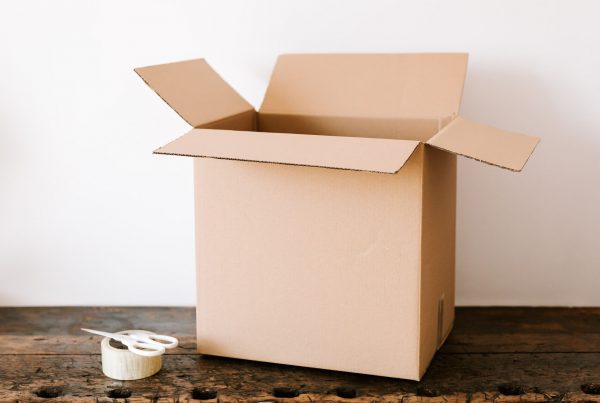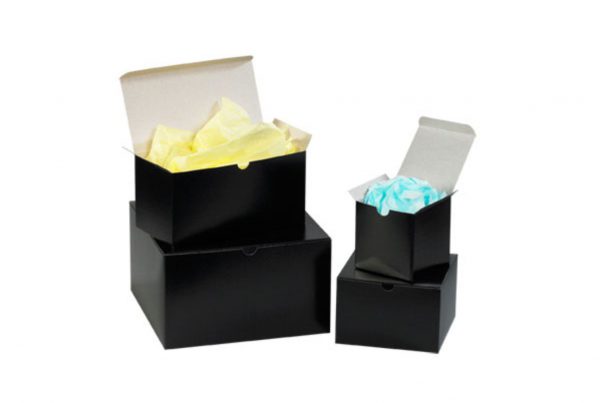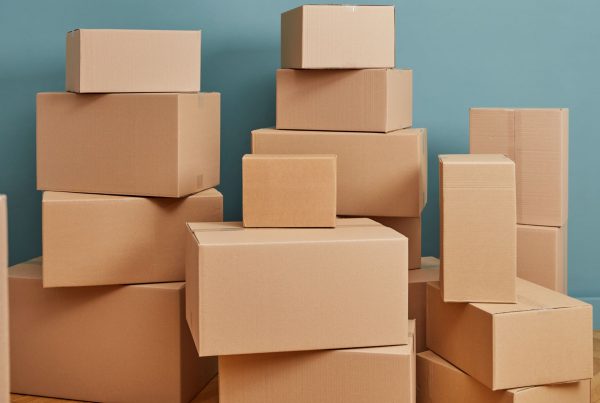Ever wondered why some packages arrive without a single dent? It’s all about nailing the packing and sealing game. Knowing how to pack and seal your shipping box is the key to avoiding damage and ensuring smooth deliveries. In this article, we’re diving into the top strategies for filling and sealing shipping boxes. These tips will keep your items safe and your customers smiling. Ready to level up your shipping skills?
Key Takeaways
- Adequate packing prevents damage during transit.
- Choosing the right materials can make or break package safety.
- Proper sealing techniques keep boxes secure.
- Labeling your boxes correctly is critical for accurate delivery.
- Special items need tailored packing solutions.
Importance of Proper Packaging
Proper packaging is everything when you’re looking to ship boxes. The correct box shields your products from the bumps and jostles of transit. Skimp on this, and you risk damaged goods, which can harm your business both in terms of reputation and financial impact.
Why Packaging Matters
Investing in a quality corrugated box is a game-changer for keeping items safe. Poor packaging is like sending your goods on a road trip with no seatbelt—damage is almost inevitable. By selecting the right materials, you’re not only protecting your products; you’re also demonstrating to customers that you care about their experience.
Reducing Damage and Loss
To ship items safely, you need a solid plan for your packing boxes. Select the correct box size and pack it with sufficient padding. This combo reduces the risk of damage and maintains your brand’s reputation. Honestly, there’s nothing worse than a customer opening a box to find a broken item, right?
Choosing the Right Shipping Boxes
Picking the perfect mailing boxes is all about material and size. Get these right, and you’re setting yourself up for safe, efficient deliveries.
Material Matters: Corrugated vs. Paperboard
Let’s break it down. A corrugated box is a tough and durable option, perfect for handling heavy or fragile items. Paperboard boxes, on the other hand, are lighter and better for smaller, less delicate products. Knowing the difference helps you choose the best box for your needs. For example, cube corrugated boxes are a go-to for sturdy, uniform protection.
Size and Weight Considerations
Size matters when it comes to packaging boxes. A box that’s too big lets items rattle around, while one that’s too small can crush them. Check out options like the 18 x 8 x 8 box for a balanced fit. Getting the size and weight right keeps your products snug and secure. Here’s a quick guide:
| Box Type | Material | Best For | Weight Capacity |
| Corrugated Box | Cardboard (multiple layers) | Heavy and fragile items | Up to 70 lbs |
| Paperboard Box | Single-layer cardboard | Lightweight products | Up to 15 lbs |
Best Practices for Packing Shipping Boxes
Packing your shipping boxes 8x8x8 or any other size the right way is crucial for safe delivery. Follow these best practices to lower damage risks. It’s all about cushioning, fit, and wrapping each item with care.
Using Adequate Cushioning Materials
Cushioning is your items’ best friend. Bubble wrap, foam peanuts, and air pillows absorb shocks and keep things from shifting. Always fill empty spaces to add extra protection against rough handling. Trust me, a little extra bubble wrap goes a long way.
Creating a Secure Fit
A snug fit is non-negotiable. Items that move around in a box are begging to break. If you’re using something like a 10 x 8 x 6 box, ensure there’s no extra space. Fill gaps with cushioning to keep everything stable during transit.
Wrapping Individual Items
Fragile items need some extra love. Wrapping each one separately adds a protective layer. This prevents scratches and damage, ensuring your products arrive in top shape. It’s like giving each item its cozy blanket for the journey.
Sealing Your Shipping Boxes Securely
Sealing your boxes properly is crucial to ensuring your items arrive at their destination intact. A strong seal prevents tampering and reduces loss. Knowing the right tape and techniques makes all the difference for secure packaging boxes.
Types of Tape to Use
Not all tapes are created equal. Here’s the rundown:
- Acrylic Tape: Clear, durable, and handles various temperatures like a champ.
- Hot Melt Tape: Perfect for heavy packages with its strong adhesive.
- Reinforcement Tape: Adds extra strength to seams, ideal for heavier loads.
Sealing Techniques for Different Box Types
Sealing methods depend on the box. For standard boxes, such as a 14 x 14 x 8 box, use at least three strips of tape along the seams and edges. For heavy boxes, use double-tape and add reinforcement tape to ensure they can withstand rough transit. Irregularly shaped boxes? Wrap tape in multiple directions for a tight seal, not just straight lines.
Labeling Your Shipping Boxes Properly
Proper labeling ensures your packages reach their destination on time. A clear, well-placed label can streamline the entire shipping process. Focus on address placement and return info for a hassle-free experience.
Address Label Placement Tips
Place the address label on the top of the box for maximum visibility. Avoid seams or corners to prevent scanning issues. Keep it flat and free from obstructions to ensure barcodes scan easily, thereby speeding up delivery.
Including Return Information
Adding return info is a smart move. If a package needs to come back, precise return details make it simple. Place them separately from the address label to avoid confusion. It’s a small step that boosts customer trust and shows you’ve got their back.
Tips for Special Packaging Needs
Shipping fragile or oddly shaped items? You’ll need to step up your game. Special care ensures these packages arrive safely.
Fragile and Irregularly Shaped Items
Fragile items require extra attention. Use custom-shaped boxes, such as cube corrugated boxes, for enhanced support. Double boxing is a pro move: place the item in a smaller box, then nest it in a larger one with extra cushioning. Fill gaps with bubble wrap or packing peanuts and slap a “Fragile” label on the box to alert handlers.
Handling Heavy Packages
Heavy packages need robust boxes to support their weight. Opt for sturdy materials and reinforce seams with packing tape for added durability. For a 36x36x36 box, distribute the weight evenly to prevent damage. Place heavier items at the bottom and lighter ones on top. Use handling labels to warn carriers about the weight.
Conclusion
Mastering the art of packing and sealing shipping boxes can seriously elevate your business. Secure packing ensures that items arrive safely, which keeps customers happy and maintains a solid reputation. Choosing the right materials and methods—such as sufficient cushioning and a snug fit—prevents damage. Proper labeling keeps everything organized and streamlines the shipping process. These steps show your commitment to quality and make your customers’ day.
About The Boxery
Need top-notch packaging solutions? Look no further than The Boxery. They’re your one-stop shop to buy shipping boxes online. From sturdy cube corrugated boxes to custom options, they’ve got it all just a click away. The Boxery knows quality is non-negotiable for safe shipping. Their wide range of products caters to every need, whether you’re shipping small or large quantities. Partner with them to ship securely and efficiently, utilizing solutions tailored to your business needs.
FAQ
What types of shipping boxes are available for purchase?
You can find a variety of shipping boxes to suit your needs. Standard sizes like the 8x8x8 box or 10 x 8 x 6 box are great for smaller items. Larger options, such as the 36x36x36 box, accommodate larger shipments. Specialized cube corrugated boxes are perfect for specific needs.
How do I choose the right size for my shipping box?
Consider your item’s size. For medium items, a 14 x 14 x 8 box or 22x22x12 box works well. Pick a size that fits snugly to prevent movement during shipping.
Are corrugated boxes better than paperboard for shipping?
A corrugated box is stronger and ideal for protecting heavier or fragile items. Paperboard is suitable for lighter products but lacks the same durability.
What cushioning materials should I use for packing boxes?
Go for bubble wrap, foam peanuts, or air pillows. These materials absorb shock and keep items safe inside packing boxes during transit.
How should I seal my shipping boxes to ensure they are secure?
Use high-quality packing tape, such as acrylic or hot melt. For heavy boxes, such as a 22x22x12 box, use double-tape or reinforcement tape to keep them secure.
What is the best way to label my shipping boxes?
Place the address label clearly on top of the box, avoiding seams or corners. Include return information separately to simplify the returns process if needed.
Do you have any tips for shipping fragile items?
For fragile items, double-box and use plenty of cushioning. Custom-shaped packaging boxes or cube corrugated boxes provide excellent support and protection.
Can I buy shipping boxes online?
You bet! Suppliers like The Boxery make it easy to buy shipping boxes online. Choose from sizes like the 20 x 12 x 4 box or specialized options to fit your needs.
What about special packaging for heavy items?
For heavy packages, reinforce your box and distribute weight evenly. Use handling labels to alert carriers, especially for larger boxes like the 36x36x36 box.





Recent Comments